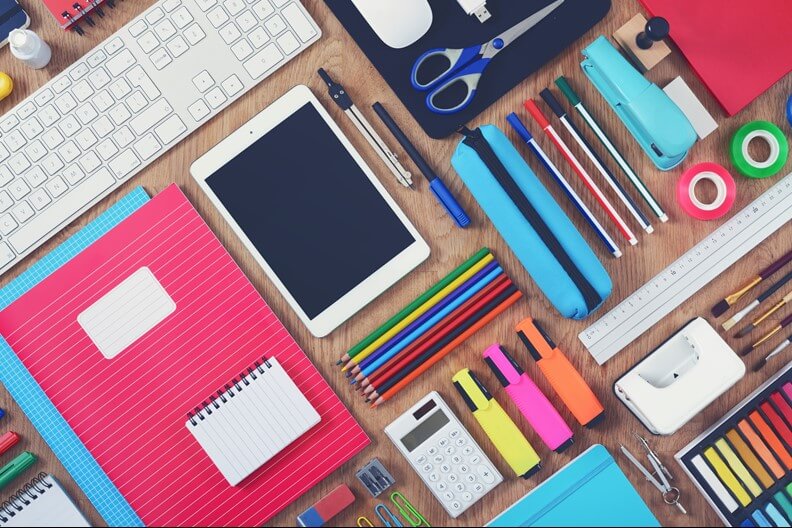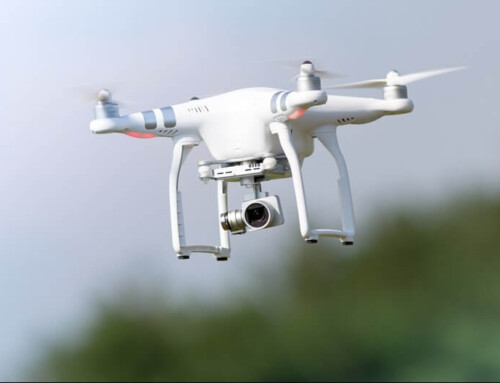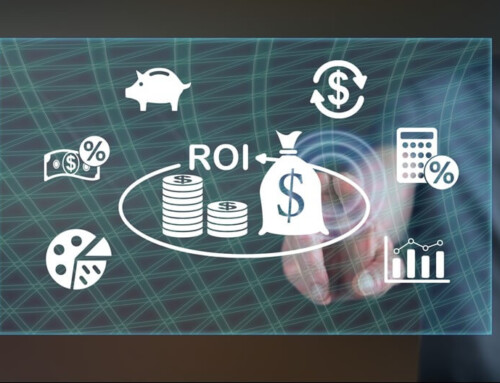Success in event and meeting planning involves thoughtful and thorough preparation, which is why having an experienced and prepared meeting planner makes all the difference.
Meeting planners are the architects behind every seamless and impactful professional gathering. Orchestrating a memorable event would be nearly impossible without their impeccable attention to detail and ability to anticipate needs and draw insights from past events and colleagues.
Meeting planners not only deliver a comprehensive skill set but bring a toolkit of essentials to pull off a successful corporate event. What may be in each meeting planner’s event kit may vary, but the basics should encompass everything from critical documents to technology to personal care and safety items.
What follows are the 11 essential items every meeting planner must have in their event kit and why they are so important.
1- MEETING PLANNING APP
As a meeting planner, you know that juggling multiple tasks and coordinating various aspects of an event while being organized and efficient is essential to the job and leads to a successful outcome. When you incorporate a meeting app, you’ll benefit by saving time, improving communication, enhancing attendee experiences, and ultimately contributing to the success of meetings and events.
A meeting app helps to streamline event planning, from initial organization and scheduling to execution and post-event analysis. You’ll find that your productivity is enhanced when you tackle tasks such as:
- Venue and vendor selection
- Timelines and scheduling
- Attendee registration, management, and engagement
- Budget management
- Real-time updates and communication
- Reports and data analysis
2- OFFICE SUPPLIES
When you host a meeting at the corporate office, chances are good that you have plenty of office supplies at your disposal. So, it makes sense that you should prepare a mobile office of sorts for offsite meetings – for your own use and the use of attendees. After all, when people are traveling to a meeting site, it is easy for them to forget to bring more than paper and a writing instrument.
Examples of office supplies you should consider adding to your event kit include:
- Paper (e.g., college ruled, graph paper, plain paper, colored papers)
- Post-it Notes
- Note cards
- Writing Instruments (e.g., pens, pre-sharpened pencils, mechanical pencils, Sharpies, highlighters)
- Binders and Fasteners (e.g., paper clips, binder clips, rubber bands, zip ties, Velcro fasteners)
- Stapler and staples
- Glue (e.g., super glue, Epoxy glue, glue stick)
- Tape (e.g., office tape, masking tape, double-sided tape, packing tape, duct tape)
- Hole punch (e.g., folders with prongs, o-rings, binders)
- Scissors
- Poster or drawing items (e.g., colored pencils, colored markers)
- Re-usable Name badges
- Pins (e.g., thumbtacks, straight pins, safety pins)
- Mints (e.g., breath mints, gum, cough drops, sugar-free candy)
- Tools (e.g., small hammer, multi-head screwdriver, tape measure, ruler)
- Lighter
- Flashlight and extra batteries
- Thumb drives
- Small sewing kit
- Stain remover wipes
It is natural to assume that some of these supplies are no longer relevant in the digital age, but you might be surprised by how necessary or in demand they still are today.
3- EMERGENCY KIT
Life can throw a curveball at any time, which makes being ready for it crucial. Whether it’s a blister from new shoes, a sprained ankle, or a paper cut, you should have the basics in an emergency kit. In addition to being the right thing to do, providing the necessary emergency supplies for attendees portrays the image of an organization that cares about its employees.
Supplies that should get space in your meeting emergency kit include:
- Bandages (e.g., Gauze roll, band-aids, roller bandages, sterile gauze pads)
- Absorbent compress dressings
- Tape (e.g., adhesive cloth tape, medical tape)
- Masks
- Gloves
- Hand sanitizer
- Antiseptic wipes
- Several non-mercury/non-glass oral thermometers (with sterile covers)
- All-purpose saline solution
- Emergency blanket
- Instant cold compresses
- Swiss Army Knife
This list might seem extensive, but you will be glad you made the effort if any attendees have an emergent situation with their health.
PRO TIP: Remember to check the seals on the bandages. They can extend past their prime when you’ve had the good fortune of not using these items. Make it a habit to check your emergency kit often to ensure everything is included and useful.
4- BASIC TOILETRIES
The comfort of attendees contributes to the overall success of any event, which is why seasoned event planners recognize the importance of basic toiletries. Consideration for forgotten items or lost luggage demonstrates thoughtful planning, reflecting a commitment to attendee convenience and satisfaction. Additionally, offering options for basic travel essentials ensures that everyone feels fresh throughout the event so that no one is distracted and can stay focused and engaged.
PRO TIP: Check with lodging establishments about the availability of basic toiletries or inquire if the hotel sundries shop carries these items. Alternatively, include some of these basic toiletries in your welcome swag. Sourcing items such as soap locally may also inject a little local culture for your attendees!
5- EXTRA CHARGING CORDS AND CHARGERS FOR DEVICES
Electronic devices have become the must-have item of professionals everywhere. While they offer plenty of benefits, the battery’s dependence on remaining charged is the drawback.
With your employees’ devices – from laptops to smartphones – hard at work taking notes during an in-person meeting, batteries are almost guaranteed to drain or hover precariously close to zero power. Not every attendee will remember to bring their charging cord and charger to the meeting space. This is why you should supply extra chargers and charging cables for popular devices onsite for attendees.
6- DETAILED MEETING AND TRAVEL ITINERARIES
A meeting planner should be ready to assist attendees at a moment’s notice. It is your responsibility to have the travel itinerary within reach so that you can answer questions or address issues that might arise while employees travel to the meeting location.
For example, suppose a flight is canceled or an attendee misses a connecting flight. In that case, a good meeting planner can instantly pull up possible alternatives and contact the proper airport staff members to get the employee on the next available flight.
Meetings can come off as frivolous to employees if they are not planned and executed well. Creating a solid, well-organized itinerary is an excellent strategy for ensuring the meeting goes smoothly and has a purpose. Once the meeting itinerary is made, remember to tuck a printed copy in your kit and have a digital copy on your laptop or meeting app. Placing another printed copy in your laptop bag is a great additional measure.
7- CAMERAS
No one knows better than a meeting planner the importance of documenting a meeting or event through video or photos. Captivating photos and videos are critical to maximizing the impact of meetings and events, promoting future events, and ensuring that the valuable content and experiences offered are preserved, shared, and utilized effectively. Whether candid or posed in nature, videos and photos demonstrate to attendees and the organization at large that the company is committed to team building, training, and so forth. This allows non-attendees to experience aspects of the event or meeting and extend their reach and impact.
Additionally, photos and videos of meetings and events are valuable tools for meeting planners, leaders, and attendees. Feedback for improvement, understanding engagement patterns, and documenting how knowledge was shared or translated can serve as training tools later.
To benefit from preserving the best moments, especially if you plan to use them in promotional materials, a professional photographer and videographer should be included in the mix. Learn more about selecting a professional photographer here.
PRO TIP: Be sure you have a signed release for photos or videos featuring people. This ensures you don’t encounter any problems later should you use these images in your promotional materials.
8- MEETING SPACE CONTACT INFORMATION
There are many reasons why you might need to get in touch with staff at the meeting space, including:
- Confirming that the space is clean, tidy, organized, and ready for your group
- Verifying whether you need to bring any electronics to ensure your technology works
- Checking to see whether the space was affected if there is a natural disaster or other local issue before your meeting
- Inquiring about possible entry restrictions to the building and obtaining a passcode or key fobs if necessary
Getting the main phone number is not enough. You need to collect any staff member’s direct extensions and email addresses involved in prepping or approving the space. Keep this information with you at all times.
9- EMERGENCY CONTACT INFORMATION
Thinking about an emergency occurring during your event is not pleasant. The best way you can avert disaster is by getting the contact information for the local police, fire departments, and hospitals in advance. Program them into your smartphone and put a printed copy in your kit.
You should also have the contact information for your organization’s insurance company, if applicable, on hand.
Equally important is the emergency contact for each employee who is attending the meeting. Collect a good phone number and email address for each person in the weeks leading up to the event.
PRO TIP: During the planning stages, meeting planners should have identified attendees who may have accommodation needs or requests. Food allergens should be discussed and labels prominently displayed. Additionally, staff should be available for any accommodation needs or questions related to the Americans with Disabilities Act.
10- AUDIO VISUAL EQUIPMENT
While most offsite meetings consider plans for audio-visual equipment such as screens, projectors, speakers, and microphones, more minor requirements might be missed. This is where seasoned meeting planners can shine by having the experience to sort out overlooked details. To ensure that presentations and communication go smoothly, inquire about elements such as:
- Presentation clickers or laser pointers
- Power strips, battery backups, and extension cords
- Adapters and dongles
- Jack or port splitters (for when more than one device is required but only one jack exists)
- Spare batteries (for microphones, remote controls, or wireless devices)
- Microphone stands (e.g., standard tripod, overhead boom, desktop)
- Screen cleaners (e.g., microfiber cloths, dry erasers)
- Mini tripods for use with smartphones or other handheld devices
- Privacy screens (to protect sensitive information during confidential meetings)
11- PROMOTIONAL MATERIALS
Whether part of a theme, a company’s brand, or used as giveaways during the event, promotional materials are an essential part of a meeting planner’s event kit. Promotional materials can be used strategically to generate excitement, build anticipation, and increase incremental engagement. They also serve as memorable takeaways, especially when they are high-quality, useful, and personalized. In this way, branded merchandise or thematic gifts leave a lasting impression on attendees, serving as reminders of the event. Ultimately, this leads to attendees sharing their experiences with others, resulting in ongoing brand promotion and word-of-mouth advertising at no additional cost.
PRO TIP: Promotional materials should be carefully selected to enhance the overall experience and leave a lasting impression—for example, a kick-off mixer where attendees choose their luxury sunglasses at a tropical destination.
A THOUGHTFULLY STOCKED KIT CREATES MEETING SUCCESS
Regardless of why your organization is holding the meeting or where it is taking place, a meeting planner kit prepped with careful thought sets the stage for success. There is no such thing as overplanning or overpacking when you are the designated meeting planner. Items you assumed you would not need might save the day.
Looking for a polished meeting planner with a well-stocked kit to set up your next corporate meeting or event? Contact Gavel International for more information.
- A Meeting Planner’s Guide to Using Drone Photography - April 15, 2024
- 11 Essential Items a Meeting Planner Must Have in an Event Kit - March 25, 2024
- Gavel International Joins in Global Meetings Industry Day 2024 (#GMID2024) Celebration - March 22, 2024







